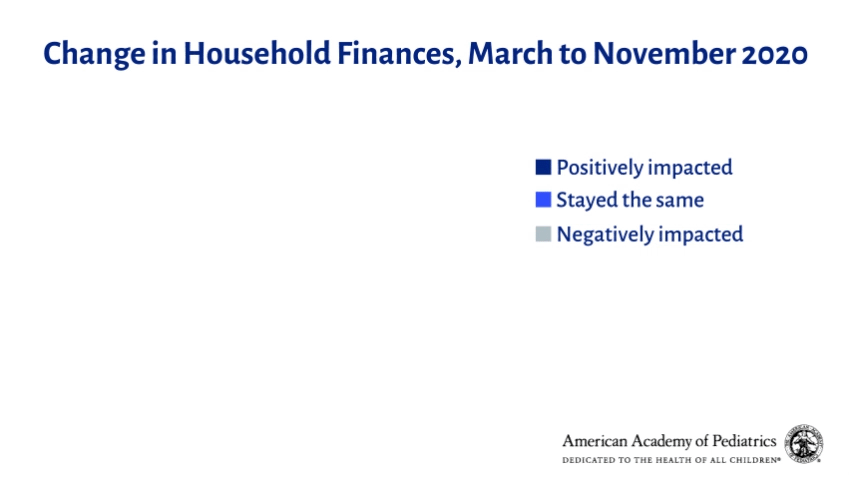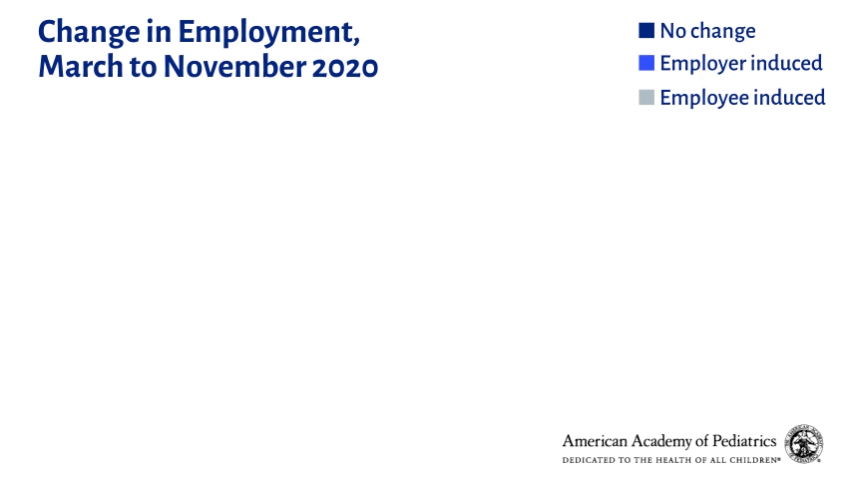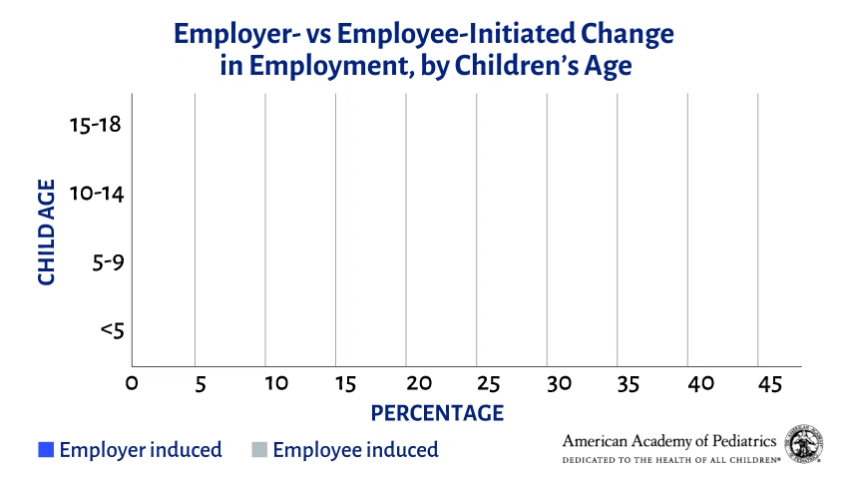This report explores the financial implication of the COVID-19 pandemic on the lives of families. Parents were asked in a survey about changes in their employment and household finances since the beginning of the pandemic. The results indicate that families with children have been significantly affected by the COVID-19 pandemic.
Key Messages
- Family life has been disrupted as a result of parents losing their jobs. About half of the parents and caregivers surveyed had experienced changes in their employment status. Both women and men had changes in employment driven by their employers. A large number of parents reduced their working hours to provide care; twice as many women as men reported doing so.
- Family finances have been negatively impacted. Agencies and individuals who care for children and families can educate policy makers about the economic impact of the pandemic on families and the long-lasting effects on children growing up in these financially stressed households.
- Resource support during the pandemic helped buffer the financial impact on families. Families may require referral and assistance in obtaining these resources.

Change in family finances was driven, at least in part, by changes in employment. Forty-seven percent of those who had been employed full- or part-time prior to the pandemic said that they had experienced some change in their employment. Respondents in this category include those who were laid off or furloughed, those whose working hours were reduced by an employer, or those who reduced their working hours to provide care for a family member.
Men and women differed in how their employment was affected. Among working men, 56% had no change in employment, 35% had their employment status changed by their employers, and 9% reduced their working hours to provide childcare or care of someone else. Women reduced work hours at even higher rates: 17% of working women reduced working hours to provide care, and 35% had their employment status changed by their employers. Less than half of women (48%) did not experience any change in employment. The higher rate of women reducing their work hours to care for family is consistent with findings before and during the pandemic.

As described in an earlier report, children have had enormous disruptions in their education. Among parents who reduced their work hours , the highest proportion had a youngest child who was 5 to 9 years of age, followed by parents whose children were 10 to 14 years of age, which may indicate that parents/caregivers felt they had to leave work to help their children with remote schooling.

Finances were buffered by federal assistance
Although many families were impacted by loss of employment, some families might have been protected by federal assistance. Nearly half (49%) of survey respondents received some financial support during the pandemic. Assistance ranged from local food banks to health insurance, and included food stamps (SNAP), income support (TANF), and food support from WIC. The survey did not collect information about unemployment benefit. Further analyses are needed to investigate whether these government supports helped buffer the impact of job loss on families and to improve policies that protect children and their families during economic downturns.
Impact on children
In a broader sense, these findings are concerning. Higher family economic stress is associated with more family conflicts and higher rates of child abuse and neglect. The Family Stress Model describes how economic hardship contributes to parent psychological distress. This distress can aggravate relationship problems between parents and disrupt parenting practices. These changes often result in increased problematic child behavior and can lead to a vicious cycle with harsher parenting and more difficult child behavioral problems. Policy makers should be advised about the possible consequences for children when household finances can threaten family stability.
Pediatricians, home visitors, and other agencies that work with children and families have realized the importance of screening for the social determinants of health, including income, housing, and food insecurity. Agencies and individuals who conduct these screenings should be prepared to provide information or resources for concrete supports. American Academy of Pediatrics resources on child poverty identify what works well to support children and families who are struggling. The implementation and use of government assistance have a long-studied effect on child poverty and are critical in response to families’ increasing concerns.
Resources for Parents and Caregivers
Last Updated
03/24/2021
Source
American Academy of Pediatrics